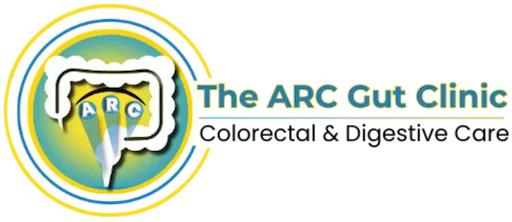Piles food refers to dietary choices that can either ease or worsen the symptoms of hemorrhoids, commonly known as piles. Nutrition plays a crucial role in managing this condition, especially since piles are often triggered or aggravated by poor digestive habits. Certain piles food to eat help soften stools and reduce inflammation, while others can intensify pain, swelling, and constipation. Knowing what to eat and more importantly, what not to is essential for both prevention and relief. In this guide, we’ll delve into piles food to avoid and the impact of diet on rectal health.
6 List of Foods to Avoid in Piles
Understanding the Piles Food to Avoid is essential to prevent flare-ups and reduce discomfort. Below are some commonly consumed items that can aggravate symptoms and delay healing, even if you’re following guidelines on What to avoid in Piles:
Refined Flour
Maida based products like white bread, pastries, and noodles lack fiber and contribute to constipation a key trigger for piles. Their low nutritional value can slow digestion, probiotic foods for gut health making them a top entry in the list of Food not to eat in Piles.
- Lacks dietary fiber, making stool harder and difficult to pass
- Slows digestion, increasing chances of bloating and discomfort
- Promotes constipation, a major trigger for haemorrhoids
- Low in essential nutrients, offering minimal digestive support
- Includes common items like white bread, pizza bases, cakes, and instant noodles foods not to eat in piles
Dairy Products
Milk, cheese, and ice cream can harden stools in some people, worsening constipation and anal pressure. Dairy may also cause bloating and gas, making it a poor choice in any Diet Plan for Piles Patient.
- May harden stools, leading to painful bowel movements
- Triggers constipation, a major concern for piles sufferers
- Causes bloating and gas, increasing abdominal pressure
- Lacks fiber, essential for smooth digestion
- Includes high-fat items like cheese and cream foods to avoid in piles
Spicy Foods
Strong spices can irritate the intestinal lining and intensify symptoms like burning and inflammation during bowel movements. People looking to manage their condition should limit spices like chili and pepper, as they are a common Food not to eat in Piles to avoid further discomfort.
- Irritates the intestinal lining, worsening existing haemorrhoids
- Can cause burning pain during and after bowel movements
- Triggers inflammation, increasing piles discomfort
- Aggravates digestion, especially in sensitive individuals
- Includes strong spices like red chili powder, black pepper, and hot sauces piles food to avoid
Processed Meat
Items like sausages, hot dogs, and bacon are high in salt and preservatives, which can dehydrate the body and impair digestion. These processed meat also lack fiber, making them one of the key foods to avoid during piles.
- Low in fiber, promoting hard stools and constipation
- Rich in sodium, which draws water from the body and leads to harder stools
- Contains preservatives and additives that disrupt gut health
- Increases digestive load, making bowel movements more difficult
- Typical examples include bacon, salami, ham, and canned meats items best avoided in a piles friendly diet.
Fried, Greasy Foods
Oily snacks like chips, pakoras, and fast piles food to eat slow digestion and contribute to constipation. Such foods are counterproductive when following the Best Diet for Piles as they offer little nutrition and increase strain during bowel movements.
- Slow down digestion, increasing the risk of constipation
- Lack fiber and nutrients, making stools harder to pass
- Increase bowel strain, aggravating haemorrhoids
- Cause bloating and discomfort, especially with regular consumption
- Includes high-fat items like fries, samosas, and greasy takeout piles food to avoid
Alcohol
Alcohol leads to dehydration and weakens the digestive tract, worsening the swelling and pain associated food to eat in piles. It also reduces the absorption of nutrients vital for tissue repair, foods to avoid for appendix making it something to avoid in Piles management.
- Dehydrates the body, leading to harder stools and constipation
- Irritates the digestive tract, increasing inflammation and discomfort
- Reduces nutrient absorption, delaying tissue healing
- Worsens piles symptoms, especially pain and swelling
- Includes drinks like beer, wine, and spirits avoid during piles management
What are the best foods to eat if you have hemorrhoids?
Choosing the right Food to Eat in Piles can ease bowel movements, reduce inflammation, and support healing. A well balanced intake of fiber-rich foods is a cornerstone of the Best Diet for Piles, especially when combined with proper hydration.
High Fiber Cereal
Whole grain cereals like oats, bran flakes, and barley provide a concentrated source of dietary fiber that softens stool and promotes regularity. These cereals are ideal for those avoiding constipation a key part of any effective Diet Plan for Piles Patient.
- Helps prevent straining during bowel movements.
- Enhances gut motility and improves stool consistency.
Beans
Lentils, chickpeas, and black beans are rich in soluble and insoluble fiber, both of which help keep stools soft and bulky. Including them supports long-term relief and lowers the chances of flare-ups, making beans a core part of the Food to Eat in Piles plan.
- Provides fiber that binds with water to ease stool passage.
- Supports a healthy gut microbiome, essential in managing piles.
Fruits and Vegetables
Leafy greens, carrots, apples, pears, and berries offer hydration and essential nutrients, how to reset gut health food to eat in piles along with fiber to improve digestion. These should replace processed foods often found in the Piles Food to Avoid list.
- Encourages gentle and frequent bowel movements.
- Delivers antioxidants and vitamins that aid tissue repair and reduce inflammation.
Manage Piles with a Healthier Diet
Dialing in nutrition reduces straining, irritation, and recurrence. The aim is simple: softer stools, predictable bowel habits, and calmer tissue. Think in terms of piles food to eat that support gut motility and microcirculation, and piles food to avoid that dehydrate, inflame, or slow transit. A practical, repeatable Diet Plan for Piles Patient is what ultimately becomes the best diet for piles.
Increase Fiber-Rich Foods
- Load the plate with soluble + insoluble fiber: Oats, barley, psyllium, apples, papaya, carrots, and leafy greens bulk and soften stool, lowering pressure on rectal veins. Start around 25–35 g/day, but ramp gradually to limit gas—this is foundational piles food to eat in any Diet Plan for Piles Patient.
- Use legumes and whole grains as anchors: Lentils, chickpeas, rajma, brown rice, and whole-wheat rotis give sustainable fiber and resistant starch for smoother passage. Pair with water (see next section) to unlock fiber’s full benefit and cement the best diet for piles.
Stay Hydrated
- Match fiber with fluids: Target pale-yellow urine as a quick gauge, and include hydrating foods like cucumber, oranges, and watermelon. Adequate fluids prevent hard stools, reduce straining, and elevate the impact of piles food to eat.
- Be mindful of stealth dehydrators: Multiple coffees, sugary sodas, and high-salt foods pull water from the gut. Choosing water, infused water, thin buttermilk, and clear soups supports a resilient Diet Plan for Piles Patient.
Avoid Spicy and Oily Foods
- Cut the burn and the grease: Heavy chilli, deep-fried snacks, and greasy gravies irritate mucosa and can trigger flare-ups. If you’re listing What not to eat in Piles, these are high on the list of piles food to avoid.
- Swap cooking methods, keep the flavour: Grill, steam, bake, or air-fry and lean on herbs (coriander, mint, cumin, turmeric) for depth. This preserves taste while aligning with the best diet for piles.
Limit Processed and Refined Foods
- Ditch low-fiber fillers: White bread, refined noodles, pastries, and biscuits slow transit and invite constipation. Prioritizing minimally processed staples is a practical definition of piles food to eat versus piles food to avoid.
- Watch the salt-sugar combo: Packaged snacks and sweets often dehydrate and bloat, compounding pressure on veins. For What not to eat in Piles, ultra-processed options are frequent culprits.
Cut Down on Red Meat and Fatty Meats
- Heavy meats slow digestion: Large, fatty portions of mutton, pork, or beef linger in the gut and increase straining risk. If you’re curating What not to eat in Piles, keep these occasional, small, and well-cooked.
- Prioritize lighter proteins: Fish, egg whites, tofu, paneer in moderation, sprouts, and dals digest cleaner and pair well with whole grains. This balance fits cleanly within the best diet for piles and a realistic Diet Plan for Piles Patient.
Include Probiotic Foods
- Feed and seed the gut: Curd, plain yogurt, kefir, idli/dosa batter, sauerkraut, or kimchi can improve stool form and ease passage. Consistency matters more than large doses—think daily, modest portions as piles food to eat.
- Don’t forget prebiotics: Bananas, garlic, onions, oats, and cooked-and-cooled rice feed good microbes, enhancing regularity. Pairing prebiotics with probiotics rounds out the best diet for piles.

Why Diet Really Matters for Piles
- Prevents Strain, Not Just Symptoms: A good diet plan for piles patient isn’t only about stool softening; it’s about reducing vein pressure long-term. Even if you eat high-fiber foods, the timing of meals and hydration levels decide whether digestion flows smoothly or gets sluggish.
- Consistency Over Quick Fixes: Many people improve symptoms for a few days but relapse because they switch back to irregular eating. The best diet for piles works only if sustained consistently — fiber intake, hydration, and portion balance every single day.
- Personalization Matters: Not everyone reacts the same to dairy, spicy foods, or caffeine. Understanding your triggers through a food diary is more effective than following a generic list. This ensures you know what not to eat in piles based on your own body’s reactions.
- Meal Timing and Portion Size: Large heavy meals overload digestion and worsen piles pain. Breaking food into 4–5 smaller meals stabilizes bowel rhythm. This approach is often overlooked in typical diet plan for piles patient guidelines but makes a big difference.
- Integration with Lifestyle: Diet alone can’t work without hydration, light exercise, and stress control. Even the piles food to eat won’t deliver results if paired with poor sleep, sitting for long hours, or lack of activity.
Conclusion
Avoiding the wrong foods is crucial in managing piles effectively. Spicy, fried, and processed foods irritate the digestive tract, while refined carbs like white rice lack fiber and lead to constipation. Piles Food to Avoid includes red meat, excessive dairy, caffeine, and alcohol, which further dry the stool, increasing discomfort. These poor dietary choices worsen symptoms and interfere with healing. A balanced, fiber-rich diet with proper hydration supports recovery and prevents flare-ups. For expert care and guidance, rely on The ARC Gut Clinic, specializing in comprehensive piles and digestive health management. Knowing the Piles Food to Avoid helps ensure a more effective and long-lasting recovery.
Read also: Yoga for Piles and Fissures.




